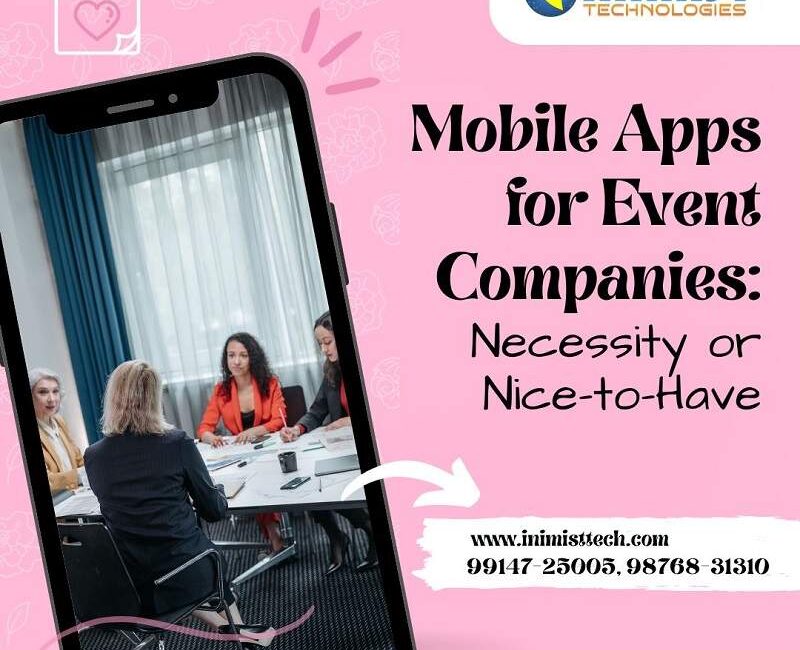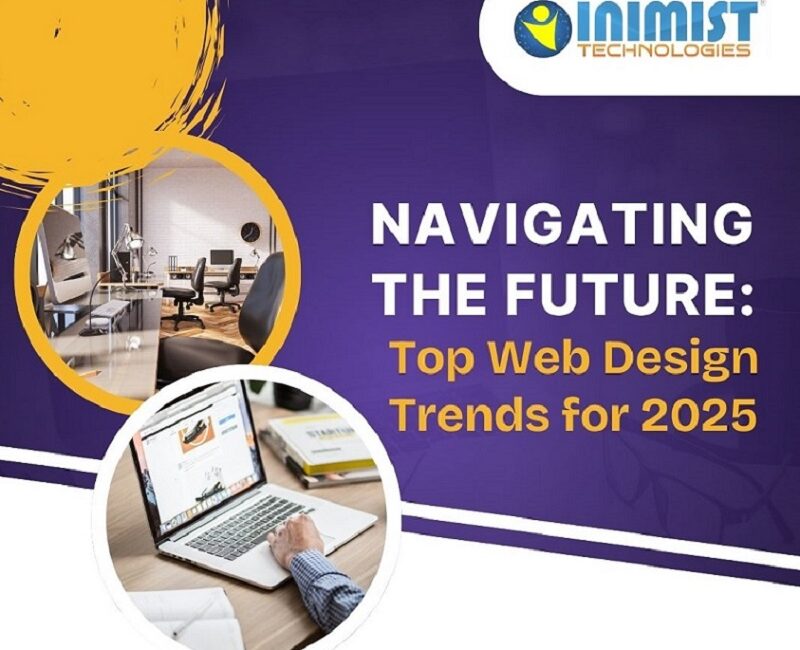
Inimist Tech | December 22, 2024
Navigating the Future: Top Web Design Trends for 2025
As we cruise into 2025, the web is no longer just a place to find information—it’s an immersive, interactive experience. Web design has evolved from static pages and basic functionality into something akin to digital storytelling. In this fast-paced digital era, staying ahead of the design curve isn’t just a trend—it’s a necessity for brands, businesses, and creators who want to thrive in a competitive online landscape.
In this article, we explore the top web design trends expected to dominate in 2025, combining aesthetics with usability, and technology with creativity.

1. AI-Powered Personalization
Artificial Intelligence (AI) is transforming every industry, and web design is no exception. In 2025, AI will go beyond chatbots and recommendation engines. Websites will use AI to dynamically personalize content, layouts, colors, and even UI components in real-time based on individual user behavior.
Example: An online clothing store might show a different homepage to a returning visitor who prefers bold colors and streetwear compared to a first-time user browsing office attire.
Why it matters: Personalized user journeys significantly boost engagement and conversion rates. AI ensures users feel understood and catered to—essential for building brand loyalty.
2. Immersive 3D and Interactive Elements
WebGL, Lottie animations, and 3D libraries are making immersive design accessible like never before. In 2025, expect to see more websites using scroll-triggered animations, 3D models, and interactive storytelling to create unforgettable user experiences.
Think: Virtual showrooms, animated product tours, or interactive timelines that respond to cursor movement.
Pro Tip: While 3D can be visually stunning, performance and load times must be optimized to avoid frustrating users on slower connections.
3. Minimalism with Maximal Microinteractions
The clean, minimalist aesthetic continues to reign—but now it’s paired with delightful micro interactions that breathe life into every click, hover, and scroll.
What’s new? Instead of flashy visuals, designers focus on subtle feedback cues—like a button ripple, a smooth transition, or a scroll-triggered text reveal.
Why it works: These details elevate UX, guide the user naturally, and make the site feel premium and intentional.
4. Dark Mode Evolution
Dark mode is no longer just a toggle—it’s a design language. In 2025, we’ll see the rise of dynamic theming, where light/dark modes shift automatically based on time of day, device settings, or user preference.
But it’s more than just aesthetics—dark mode can reduce eye strain, save battery life, and look incredibly sleek when paired with neon accents, glass morphism, or duotone illustrations.
5. No-Code & Low-Code Web Design Tools
Platforms like Webflow, Framer, and Editor X are enabling designers (even non-coders) to build complex websites with intuitive visual interfaces.
2025 Trend: The democratization of web design continues, making it easier for startups, solopreneurs, and creators to launch polished, interactive websites without hiring large dev teams.
Result: Faster prototyping, more experimentation, and a surge of creative, niche micro-sites.
6. Voice & Gesture Interfaces
The way we interact with websites is changing. With the rise of voice assistants and motion-enabled devices, websites in 2025 will start incorporating voice navigation, voice search, and even gesture-based commands, especially for smart TV and AR/VR-based browsing.
Example: A travel website that lets users say “Show me beach destinations under $500” or swipe midair to flip through vacation packages.
Challenge: Accessibility and fallback UI remain critical for universal usability.
7. Sustainable & Eco-Conscious Design
Yes, even web design can be eco-friendly. In 2025, there’s growing awareness around digital sustainability—optimizing websites for lower energy use, reducing data transfer, and hosting on green servers.
Key strategies:
-
Using lighter file sizes and fewer animations.
-
Minimalist, efficient code.
-
Lazy loading of images and videos.
Why it matters: Not only does this reduce your carbon footprint, but it also improves site speed, SEO, and user retention.
8. Bold Typography and Expressive Fonts
In a world where attention spans are short, typography is making a big, bold comeback. Designers are moving away from uniform sans-serif fonts and embracing:
-
Oversized headlines
-
Variable fonts
-
Artistic serif fonts
-
Handwritten or custom typefaces
2025 twist: Fonts will also become interactive, changing weight, color, or alignment as users scroll or hover.
Tip: Make sure legibility isn’t sacrificed for style.
9. Augmented Reality (AR) Integration
AR is moving from novelty to necessity, especially for industries like retail, interior design, education, and beauty.
Imagine: Trying on a pair of sunglasses virtually or placing a 3D model of a sofa in your living room using your phone camera, without needing to leave the website.
Thanks to WebXR and AR toolkits, expect more web-native AR experiences that don’t require downloading an app.
10. Inclusive, Accessible Design First
Accessibility is no longer an afterthought. In 2025, websites must be designed from the ground up to be inclusive of all users, regardless of age, ability, or device.
This includes:
-
Proper contrast ratios
-
Screen reader support
-
Keyboard navigability
-
Clear alt text and labels
Bonus Trend: Brands are embracing neurodiverse-friendly design, which involves avoiding overwhelming animations, using consistent navigation, and offering customization of layout and fonts.
11. Horizontal Scrolling & Unconventional Layouts
Breaking the mold, designers are getting creative with layout structure. Horizontal scrolling sections, vertical split screens, and asymmetrical grids are being used to surprise and delight users.
Warning: This must be done carefully. Overly complex navigation can backfire unless it’s intuitive and touch-friendly across devices.
12. Emotion-Driven Design
In 2025, websites are becoming increasingly emotional experiences, telling stories through imagery, video, sound, and animations that evoke a sense of connection.
Examples:
-
Music that changes based on user interaction
-
Animated backgrounds reflecting the mood of the content
-
Personal storytelling instead of corporate jargon
Result: Visitors stay longer, remember your brand, and feel more emotionally engaged.
Conclusion: Designing for a Multi-Sensory, Intelligent Web
Web design in 2025 is about more than looking good—it’s about feeling good, being fast, being ethical, and being useful. The most successful websites will be those that:
-
Adapt to user needs in real-time
-
Tell a compelling visual and emotional story
-
Works beautifully across all platforms and devices
-
Please respect the environment and the diversity of their users
To stay competitive, web designers must continue to learn, test, and experiment. Embrace the technology, but never forget the human at the other end of the screen.
Welcome to the future of the web.
Latest Posts
-
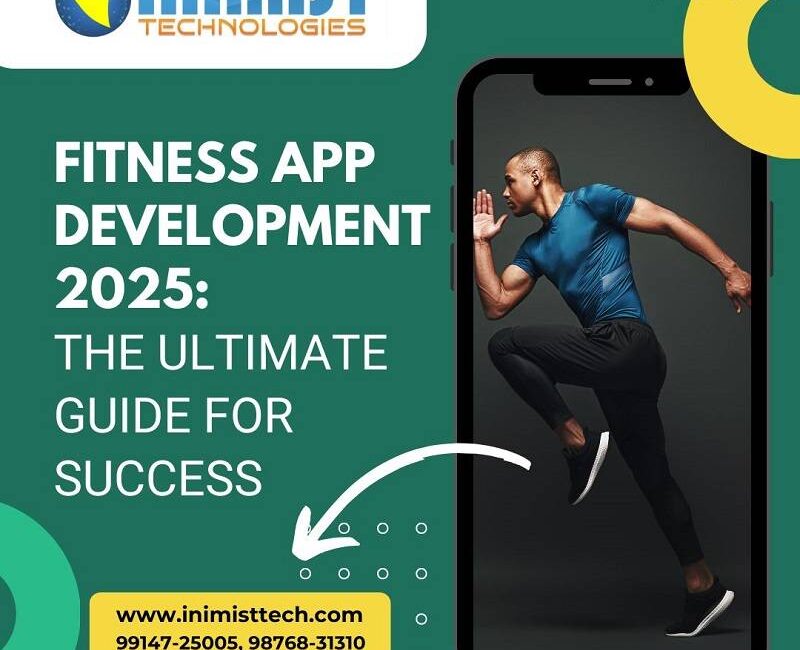
Fitness App Development in 2025: The Ultimate Guide for Success
November 5, 2025 -
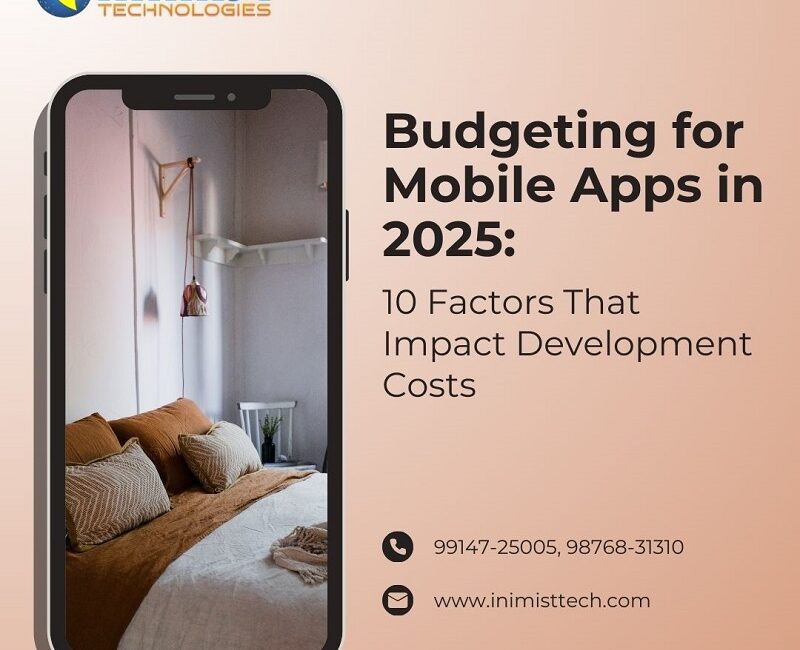
-

IT Companies in Mohali The Impact of Mobile Apps
July 3, 2025 -
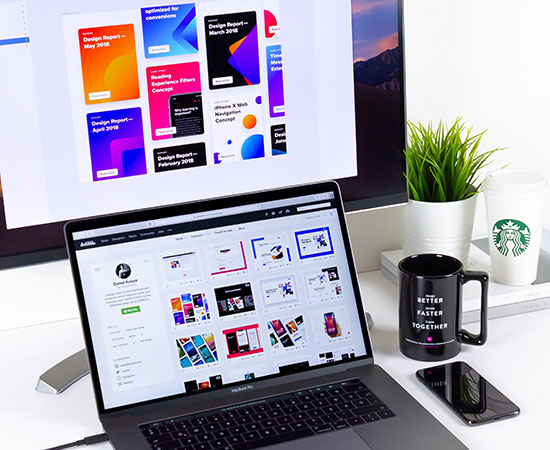
Mastering Mobile App Development in 2025
June 3, 2025 -
